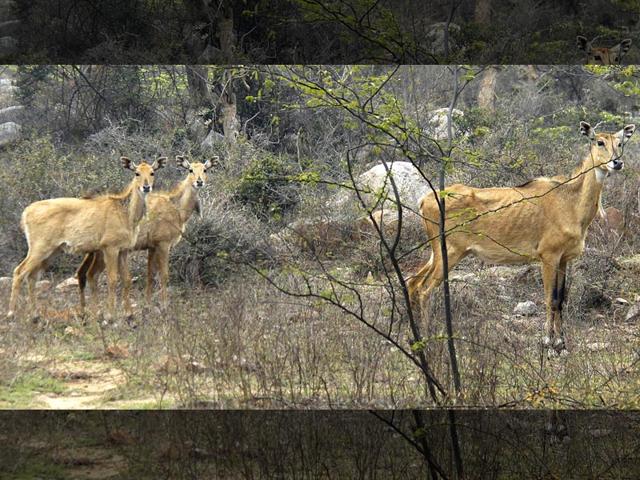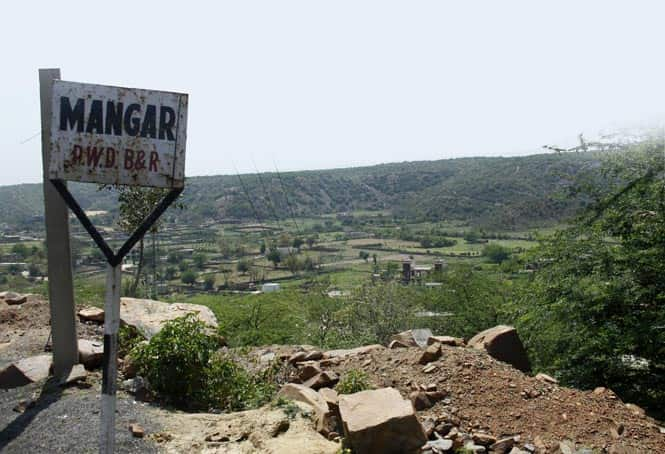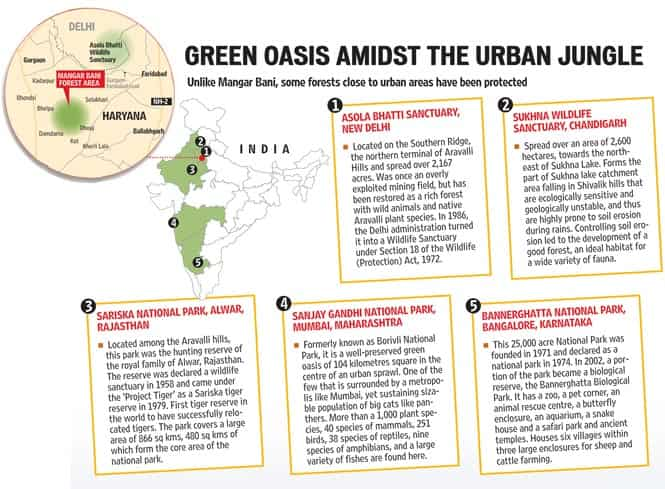The ugly truth: NCR is sitting on an environmental disaster
The last virgin forest of the National Capital Region is under threat from the nexus of the state and big builders. With most of the forest land sold already, the region is sitting on an environmental disaster.
Experts on environment refer to Mangar Bani in Faridabad, Haryana, as the "last virgin forest" in the National Capital Region. However, despite several guidelines and court orders for preserving the "sacred" forest area in the Aravalis, the Haryana government has consistently failed to recognise the area under the category of forests, and if realty firms have their way, the "sacred" forest may soon vanish.

For a decade now, the ecologically fragile Mangar Bani area has been continuously targeted for different infrastructure projects. The forest that has been cared for centuries by the three villages of Mangar, Bandhwari and Baliawas, is considered sacred by the villagers, who believe that Gudriya Baba, a local saint attained salvation in this forest. However, due to its proximity to Delhi, Gurgaon and Faridabad, the forest land caught the fancy of big and small builders, and land rates here are rising; already most of the area has been sold to private players.
The story of Mangar Bani's privatisation begins with that of the Aravalis - where mining has been banned by the Supreme Court since October 2002 - that have been the target for infrastructure projects by successive Haryana governments for several decades now. The state has also been wanting to allow tourism in this area. According to the draft regional plan 2021, a 'go-ahead' for construction of residential and commercial complexes has also been given. "The authorities have been seeking permission for change in the land use of forest areas, as if the plains are exhausted for township planning," said Chetan Agarwal, an environmental analyst.
Also watch: The fight to keep Delhi’s last sacred forest Mangarbani alive
In April 2014, the National Capital Region Planning Board (NCRPB) decided that the "government of Haryana will ensure that Mangar Bani, alongwith an essential buffer zone of 500 meters, will be a 'No Construction Zone' in the Sub Regional Plan for Haryana Sub Region of NCR, 2021, and also in the notified Master /Development Plan".
The move came after several representations were made by environmentalists from across the NCR to the NCRPB and the Ministry of Forests and Environment. However, now, locals allege that draft map of the Bani prepared by the state government is much smaller than the actual area. Three infrastructure companies that own land in Mangar have recently sought change in its land status to that of agricultural land, which makes it easier for them to receive construction licenses.
Until the 1960s, this area was common panchayat land. By 1980s, however, most of the land here was plotted and sold off to private players. The villagers were given Rs 2,000- Rs 5,000 per acre for the land at the time. "These villagers got a raw deal as land rates have risen significantly since then. Big builders have built large land banks here, and are waiting for the relaxation of the norms to start construction," said Lieutenant Colonel (retired) Sarvadaman Oberoi, treasurer, Mission Gurgaon Development.
Unaware of the construction plans here, villagers of Mangar Bani are still trying to preserve their heritage. "We don't cut a single tree, as we believe it will invite the wrath of the god," said Chanda sarpanch, the village headman of Mangar.

Despite several court orders, pressure from the centre and environmentalists, the state government has refused to classify Mangar Bani as a forest. (Photo by Manoj Kumar/HT)
According to Nayanjot Lahiri, professor of history at Delhi University, until the 1990s, Mangar was an untouched oasis, marked, as it still is, by the presence of the "sacred" forest of Dhau trees, spread over several acres. With Mangar, these trees are also on the verge of extinction. "Efforts to replant this species elsewhere have been unsuccessful. Even the neighbouring Sariska tiger reserve doesn't have them, making Mangar Bani the only spot for future research related to this species," said R P Balwan, a former conservator of forest, Gurgaon. In addition, the forest has tremendous floral diversity, and its destruction will have serious consequences on the respiratory health of nearby areas including Delhi.
But whether Mangar Bani will survive the onslaught of the big builder-state nexus, who stand to benefit from the rampant constructions here, is something only time will tell.
FALLING PREY TO URBANISATION
In the last six months, five bodies were recovered in Gurgaon - inside a golf course, outside it, and on the road. All these were bodies of leopards, who fell prey to Gurgaon's rapid urbanisation and a loss of the habitat of the big cat. Wildlife experts and environmentalists claim that constructions such as roads and farm houses have come dangerously close to dense leopard habitats, leading to an increase in such incidents in the area.
"Leopards are shy, and prefer to retreat deep into the forest than share their natural habitat with potentially dangerous humans," said Koustubh Sharma, senior regional ecologist, Snow Leopard Trust. "When these animals try to reclaim their homes, they are either trampled in accidents on what are now roads, or captured and murdered on private farms that were once forests," said Sharma.
Until about 50 years ago, Gurgaon was the natural habitat for tigers, who have now become extinct in the area. Mangar Bani and its neighbouring forest areas in Haryana are important as they form an unfragmented wildlife corridor with the Aravallis in Rajasthan and Delhi. In the past year, there has been an increased sighting of leopards, pythons and other animal and bird species here. According to the latest Haryana Forest census 2011, eight leopard sightings have been recorded in the Aravallis. But Mangar has not yet been identified as a forest by the state government. While Delhi has the Asola Bhatti Sanctuary in the Aravalli hills, and Rajasthan has the Sariska Tiger Reserve, the intervening Aravalli areas in Haryana have no sanctuary or national park. According to experts, there is a serious lack of understanding about their behaviour amongst locals.
"Leopards do not attack humans unless threatened," said Mike Pandey, international wildlife and environment documentary filmmaker.
According to wildlife department officials in Haryana, roads such as Gurgaon-Faridabad highway, NH-8, Sohna-Gurgaon Road and the Mohammadpur-Tauru road are interspersed in the Aravallis, close to existing leopard habitats, but wildlife clearance is not mandatory for infrastructure projects here. However, environmentalists argue that the state government's reluctance to preserve the forest, and the ensuiing privatisation of the area has led to an increase in the man-animal conflict.

Stay updated with all top Cities including, Bengaluru, Delhi, Mumbai and more across India. Stay informed on the latest happenings in World News along with Delhi Election 2025 and Delhi Election Result 2025 Live, New Delhi Election Result Live, Kalkaji Election Result Live at Hindustan Times.
Stay updated with all top Cities including, Bengaluru, Delhi, Mumbai and more across India. Stay informed on the latest happenings in World News along with Delhi Election 2025 and Delhi Election Result 2025 Live, New Delhi Election Result Live, Kalkaji Election Result Live at Hindustan Times.





